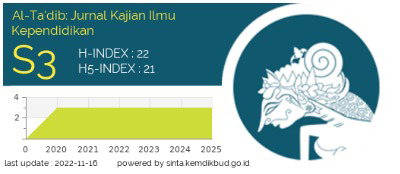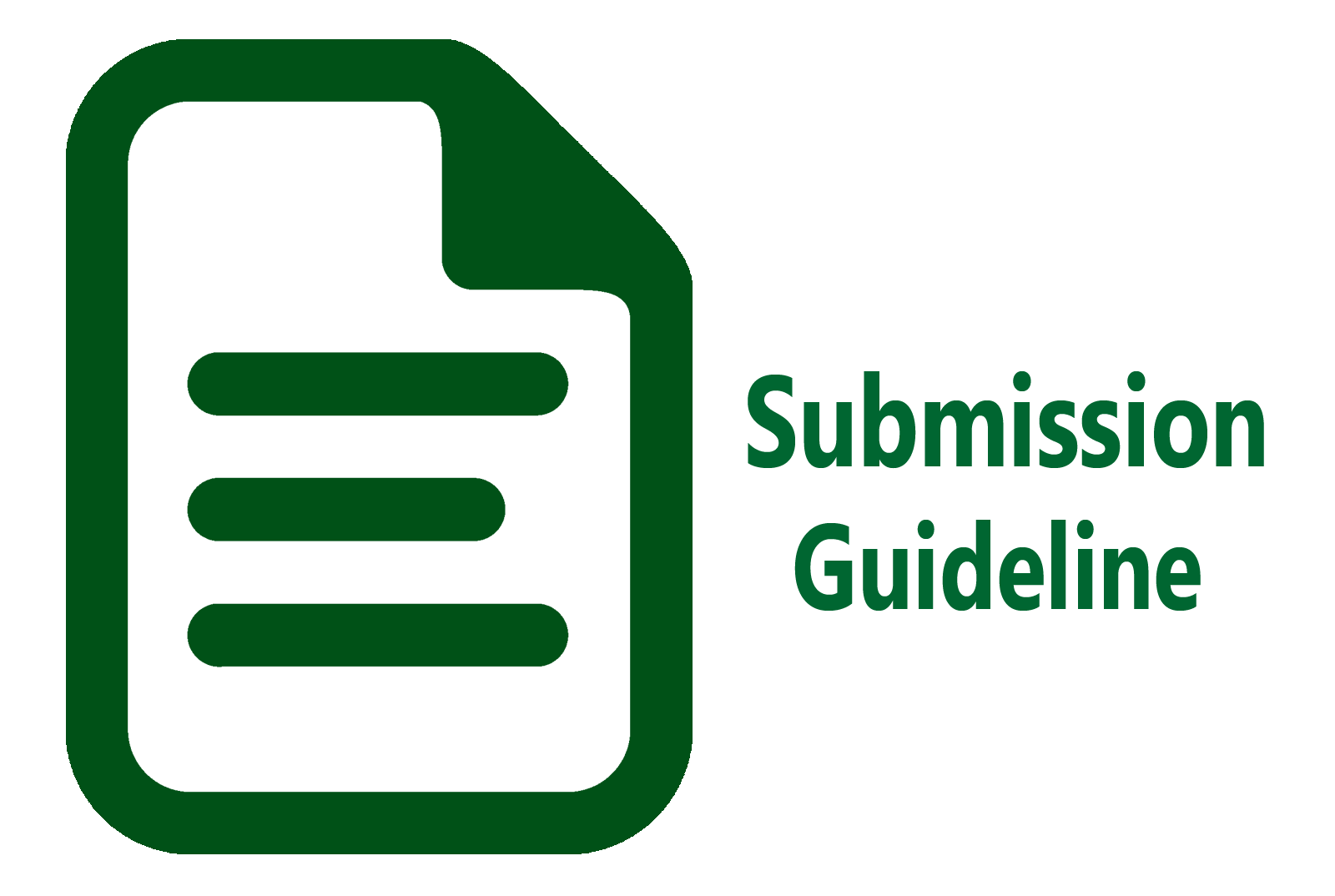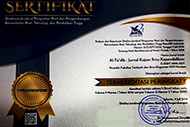Approach to the Multimedia-Based Contextual Learning of Arabic for Banking
Abstract
This study aims to reveal the motivation to learn Arabic for the banking sector through multimedia-based contextual learning using qualitative methods. Data were garnered using observation, interviews, and documents. The results of data analysis show that contextual learning can motivate students to learn and play an active role in formulating the contextual conversation according to the theme given to each group. The students' attention was focused on searching vocabulary, asking questions, and completing the script in the allotted time. They were diligent, tenacious and enthusiastic in role playing the conversational texts and practicing speaking and acting using Arabic for banking conversation scripts.
Keywords: Arabic for banking; contextual teaching and learning; multimedia
Full Text:
PDFReferences
Aladdin, A., Hamat, A., & Yusof, M. S. (2004). Penggunaan PBBK (Pembelajaran Bahasa Berbantukan Komputer) dalam pengajaran dan pembelajaran bahasa Arab sebagai bahasa asing: Satu tinjauan awal. GEMA Online Journal of Language Studies, 4(1), 1-16.
Al Nabawe, H. I., & Al Sawy, M. Y. (2021). Information technology and its role in developing the Arabic language department at the Northern Border University. Applied Linguistics Research Journal, 5(9), 64-70. doi:10.14744/alrj.2021.68916
Ambron, S., & Hooper, K. (1988). Interactive multimedia. Microsoft.
Badwelan, A., Drew, S., & Bahaddad, A. A. (2016). Towards acceptance m-learning approach in higher education in Saudi Arabia. International Journal of Business and Management, 11(8), 12-30. doi:10.5539/ijbm.v11n8p12
Bouw, E., Zitter, I., & De Bruijn, E. (2019). Characteristics of learning environments at the boundary between school and work: A literature review. Educational Research Review, 26(1), 1-15.
Chen, W., Looi, C. K., & Tan, S. (2010). What do students do in a F2F CSCL classroom? The optimization of multiple communications modes. Computers & Education, 55(3), 1159-1170.
Clark, R. C., & Mayer, R. E. (2016). E-learning and the science of instruction: Proven guidelines for consumers and designers of multimedia learning. John Wiley & sons.
Creswell, J. W., & Poth, C. N. (2016). Qualitative inquiry and research design: Choosing among five approaches. Sage Publications.
Darling-Hammond, L. (2006). Constructing 21st-century teacher education. Journal of Teacher Education, 57(3), 300-314.
Davis, B., & Summers, M. (2015). Applying Dale's cone of experience to increase learning and retention: A study of student learning in a foundational leadership course. In Engineering Leaders Conference 2014 on Engineering Education. Hamad bin Khalifa University Press.
Gharawi, M. A., & Bidin, A. (2016). Computer assisted language learning for learning Arabic as a second language in Malaysia: Teacher perceptions. International Journal of Information and Education Technology, 6(8), 633-637. doi:10.7763/IJIET.2016.V6.764
Hsu, Y. C., & Ching, Y. H. (2012). Mobile microblogging: Using Twitter and mobile devices in an online course to promote learning in authentic contexts. International Review of Research in Open and Distributed Learning, 13(4), 211-227.
Järvenoja, H., Järvelä, S., & Malmberg, J. (2015). Understanding regulated learning in situative and contextual frameworks. Educational Psychologist, 50(3), 204-219.
Johnson, E. B. (2002). Contextual teaching and learning: What it is and why it's here to stay. Corwin Press.
Khaufiatunnisa. (2015). The effectiveness of contextual teaching and learning in improving students’ reading skill in procedural text. Journal of English and Education, 3(1), 80-95.
Kholmurzaev, A. A., & Tokhirov, I. K. (2021). The active participation of students in the formation of the educational process is a key to efficiency. ACADEMICIA: An International Multidisciplinary Research Journal, 11(4), 435-439.
Lawrence, J., & Tar, U. (2013). The use of grounded theory technique as a practical tool for qualitative data collection and analysis. Electronic Journal of Business Research Method, 11(1), 29-40.
Marlina, R. (2009). “I don’t talk or I decide not to talk? Is it my culture?”: International students’ experiences of tutorial participation. International Journal of Educational Research, 48(4), 235-244.
Miles, M. B., Huberman, A. M., & Saldaña, J. (2018). Qualitative data analysis: A methods sourcebook. Sage Publications.
Misir, H. (2018). Digital literacies and interactive multimedia-enhanced tools for language teaching and learning. International Online Journal of Education and Teaching, 5(3), 514-523.
Mubarak, F. (2021). The innovation of multimedia-based Arabic language learning. Turkish Journal of Computer and Mathematics Education, 12(14), 2486-2496.
Mudinillah, A. (2019). The development of interactive multimedia using Lectora Inspire application in Arabic language learning. Jurnal Iqra': Kajian Ilmu Pendidikan, 4(2), 285-300.
Muhsin, M. A. A., & Ahmad, N. (2019). The emergence of education 4.0 trends in teaching Arabic Islamic finance curriculum design: A case study. International Journal of Psychosocial Rehabilitation, 23(4), 1019-1029.
Qing, X. U. (2011). Role play: An effective approach to developing overall communicative competence. Cross-Cultural Communication, 7(4), 36-39.
Richards, J. C. (2008). Teaching listening and speaking: Theory and practice. Cambridge University Press.
Ruberg, L. F., Moore, D. M., & Taylor, C. D. (1996). Student participation, interaction, and regulation in a computer-mediated communication environment: A qualitative study. Journal of Educational Computing Research, 14(3), 243-268.
Saad, K. N. M., Osman, N., Teh, K. S. M., & Noor, S. S. M. (2017). Penggunaan KeLiP dalam pembelajaran bahasa Arab: Suatu tinjauan di Universiti Sultan Zainal Abidin. O-JIE: Online Journal of Islamic Education, 3(2), 1-8.
Sankey, M., Birch, D., & Gardiner, M. (2011). The impact of multiple representations of content using multimedia on learning outcomes across learning styles and modal preferences. International Journal of Education and Development Using ICT, 7(3), 18-35.
Shaw, D. L. (2010). Bridging differences: Saudi Arabian students reflect on their educational experiences and share success strategies. Oregon State University.
Spradley, J. P. (2016). Participant observation. Waveland Press.
Thamarana, S., Kumar, S., Prabhakar, T., Gulivindala, S., Matta, V., Seela, C. R., & Ramana, P. (2016). Use of multimedia technologies in English language learning: A study. International Journal of English Language Teaching, 4(8), 15-30.
Usman, A. Y. (2013). Using information and communication technology (ICT) to enhance the teaching and learning of Arabic and Islamic studies in Nigeria. Journal of Teaching and Education, 2(3), 353-368.
Wesselink, R., De Jong, C., & Biemans, H. J. (2010). Aspects of competence-based education as footholds to improve the connectivity between learning in school and in the workplace. Vocations and Learning, 3(1), 19-38.
Yunus, F. A., & Rauf, M. A. (2003). Al-Marja’ fii ta’liim al-lughah al-Arabiyahlil-ajaanib “min al-nazhariyyah ila al-tathbiiq, Thab’ah al-Ula (al-Qahirah: Maktabah Wahbah, 1423 H/2003 M), 51-60.
Zaim, M. (2016). The power of multimedia to enhance learners’ language skills in multilingual class. Proceedings of ISELT-4, 22-29.
Zepke, N., & Leach, L. (2010). Improving student engagement: Ten proposals for action. Active Learning in Higher Education, 11(3), 167-177.
DOI: http://dx.doi.org/10.31332/atdbwv15i1.3735
Refbacks
- There are currently no refbacks.
Copyright (c) 2022 Beti Mulu

This work is licensed under a Creative Commons Attribution-NonCommercial-ShareAlike 4.0 International License.
| Indexing: |










